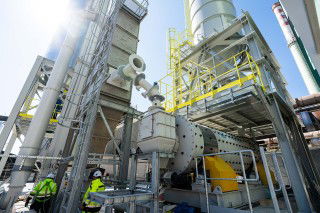Cemex’s sustainability commitment includes constantly looking at ways to minimize its energy use and reduce its carbon footprint. In March, the U.S. Environmental Protection Agency (EPA) and the DOE selected Cemex USA as the 2009 ENERGY STAR Partner of the Year for its outstanding energy management and reductions in greenhouse gas emissions. In 2008 alone, Cemex decreased its total energy use equal to reducing 115,000t of CO2 emissions. This is equivalent to providing electricity to at least 1,500 American homes for a decade or avoiding about 21,000 passenger vehicles’ CO2 emissions for a year.

Turning waste concrete and CO2 into a binder
In July, Heidelberg Materials switched on the first continuous-mode enforced carbonation reactor...